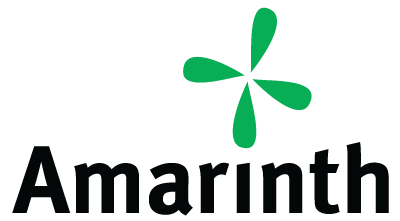Structural Loads for Offshore Structures
Background
There are various standards regarding the calculations for structural loads in offshore installations. When end-users, EPCs or process package module providers generate the requirements for offshore equipment these standards are frequently referenced but, in some cases, they may not be relevant or even appropriate to the equipment being procured.
For Amarinth equipment, structural loads on baseplates and skids are frequently raised.
Baseplate:
A baseplate is a structure, generally fabricated from steel using structural sections, on which the centrifugal pump and electric motor are mounted and held in alignment for trouble free operation. Careful design, manufacturing, handling and installation of baseplates are crucial to provide reliable service. Pumps in the oil and gas industry are subject to high external loadings via attached piping and so maintaining shaft alignment and minimising equipment distress is complex. For this reason, API 610 puts more emphasis on external piping loads and baseplate design than any other rotating equipment standard.
Skid:
A skid is also a structure, generally fabricated from steel using structural sections, but which usually supports a complete pump package handling an application such as water treatment, de-sanding, mixing, filtration, or chemical injection. The skid will include the pump and drive, which could be steam turbines, gas or diesel engines, pneumatic or electric motors, along with seal and seal support systems, pipework, instrumentation, valves and control. The whole package can therefore be simply connected to the suction, discharge, and power of a process as necessary. The skid design incorporates the baseplate and so for the oil and gas industry the skid would be designed to API 610, with additional customer specific specifications such as Norsok, Statoil, Equinor, Shell DEP, ATEX and BP DGS as required.
Referenced ISO standards and building codes
Despite the baseplates and skids for oil and gas applications being designed and manufactured according to API 610, Amarinth often sees several other structural and building standards referenced in requirements, such as:
- ISO 19902:2007/A1:2013 – Petroleum and natural gas industries — Fixed steel offshore structures
- Eurocode 3 – Design of steel structures
- ASCE 7 – Minimum Design Loads and Associated Criteria for Buildings and Other Structures
See Appendix for more comprehensive list and further details of each.
Requirements made of Amarinth
Amarinth frequently sees project specifications referencing one or other of the structural or building standards with wording such as “steelwork to structural specifications”. However, by not explicitly stating to what equipment the standard applies to, then by default it applies to the baseplate or skid of the pump package (that may itself be incorporated within a process package module).
Structural or building standards are detailed and comprehensive and largely address the design and analysis of offshore (and high rise) structures as a whole and are difficult to apply with any reliability to discrete pieces of equipment installed as part of a larger package on a structure. In fact, pumps are “rotating” equipment and the standards have been developed for the design of “static” equipment.
In many cases, when one or other of these standards is referenced for the overall structure, no-one is deciding what is and is not applicable in these standards to the baseplate or skid because baseplates and skids do not appear within the standards as discrete items and so the default is to simply treat them as “steelwork” within the requirements sent to Amarinth.
When this is questioned though, the response is often that the baseplate of the pump forms part of the offshore structure. However, this is only relevant under very specific circumstances, which if applicable should be made clear in the requirements.
On a baseplate or skid, standard pre-certified and proven components, such as lifting eyes, are frequently used. If the above standards are applied, then these pre-certified components may not be allowed and, for example, welded lifting lugs would have to be designed in place of the lifting eyes with non-destructive evaluation / testing (NDE / NDT) carried out on the welded lugs, which could add significant cost and delay into the project for no benefit.
Hierarchy of loads
To understand why the structural and building standards are not usually relevant to the design of baseplates and skids (without due thought) we need to consider the hierarchy of the loads and calculations.
We can break down the design of an offshore structure as follows:
- Primary – this is the design of the offshore structure itself, such as on an offshore platform the caissons, decks etc.
- Secondary – this is the design of the other structures on, for example, an offshore platform such as cranes, derrick, bridges, stairs, walkways, process package modules etc. and how these interact with the primary structure
- Tertiary – this is the design of everything else, including discrete equipment in the secondary structures
The structural and building standards largely deal with the structural loads and stresses on the primary or secondary structures, for example due to wind, wave, tides, currents, ice, and other significant forces such as seismic activity, or accidental loads such as collisions or explosions. During the design of an offshore installation, such as an oil or gas platform these standards guide the detailed calculations, modelling and analysis for material choice, thicknesses, welding and fabrication methods. The loads that may be exerted on the platform would be analysed considering the overall equipment, material and layout and associated weights, centres of gravity and exposure to environmental actions. This would include, amongst other significant structures, helidecks, cranes, derrick, bridges, walkways and lifeboat stations, and the process package modules that sit on the platform.
Amarinth pumps are usually an integral part of a process package module, or other secondary structure, sometimes even a tertiary structure. The process package module contractors would have already been required to submit to the end-user or EPC their data to be included in the overall primary structural design as undertaken above using the appropriate standards. The data from the process package module contractor would have included any allowances for the discrete equipment within the process package module, such as pumps and their baseplates or skids.
Amarinth position
Amarinth has a proven reputation for delivering robust and reliable pumping solutions, often exceeding API 610 standards. Within a process package module for the oil and gas industry, Amarinth baseplates and skids for centrifugal pumps are designed and manufactured to meet or exceed customer specifications. The designs have evolved over decades and fully consider the stresses and loadings that a hostile offshore environment subjects the equipment to. This means that in the unlikely event that a baseplate or skid should fail, the issue causing this is most likely outside the scope of the overall offshore structural design envelope, meaning that the overall structure itself will also fail.
API 610 also ensures the reliability and longevity of its pumps. This demands baseplates and skids that are designed and manufactured inherently stiff enough to maintain high levels of shaft alignment in extreme circumstances, including hostile operational environments and during other operations such as transport and lifting. This results in a baseplate or skid that is considerably stiffer than could be implied by any structural specification.
Therefore:
- as Amarinth pumps and their baseplates and skids are usually incorporated within a process package module or other secondary structure and the responsible contractor will already have submitted their data to the EPC or end-user for inclusion in the overall structural design, modelling and analysis of the offshore structure, and
- API 610 ensures that the Amarinth pump and associated equipment is designed and manufactured suitable for an offshore environment,
in most cases there is no need for a baseplate or skid to be further certified to any of the structural or building standards that apply to the overall offshore structure.
Should an Amarinth pump and its baseplate or skid be installed on an offshore structure such that it would not have been accounted for within another secondary or tertiary structure; or, for example, design, manufacturing, or testing is specified that goes beyond API 610; then Amarinth would undertake any additional design, modelling and analysis work to certify the baseplate to the relevant structural design standard for the offshore installation once the details had been identified and agreed. However, this would incur additional cost and time for the project.
Appendix
ISO 19902 - Petroleum and natural gas industries — Fixed steel offshore structures
This specifies requirements and provides recommendations applicable to the following types of fixed steel offshore structures for the petroleum and natural gas industries:
- caissons, free-standing and braced
- jackets
- monotowers
- towers
ISO 19901-3 - Petroleum and natural gas industries — General requirements for offshore structures
This part of ISO 19901 has been prepared for those structural components of offshore platforms which are above the wave zone and are not part of the support structure or of the hull.
ISO 19900 - Petroleum and natural gas industries — Specific requirements for offshore structures Part 3: Topsides structure
This specifies general principles for the design and assessment of offshore structures subjected to known or foreseeable types of actions. These general principles are applicable worldwide to all types of offshore structures, including, bottom-founded structures as well as floating structures, and to all types of materials used including steel, concrete and aluminium.
Eurocode 3 - Design of steel structures
Primarily used in Europe, this applies to the design of buildings and other civil engineering works in steel specifying the principles and requirements for the safety and serviceability of structures, the basis of their design and verification and the requirements for resistance, serviceability, durability and fire resistance of steel structures.
ASCE 7 - Minimum Design Loads and Associated Criteria for Buildings and Other Structures
Primarily used in the Middle East, this describes the means for determining design loads including dead, live, soil, flood, tsunami, snow, rain, atmospheric ice, seismic, and wind loads and their combinations for general structural design.
IBC – International Building Code
Primarily a building code used in the United States, it includes the specification of seismic analysis in the design of buildings, especially high-rise towers, where earthquake loads together with the wind loads considerations have a huge impact on the design result.
DNVGL-OS-C101 – Design of offshore steel structures
A standard providing principles, technical requirements and guidance for the structural design of offshore structures and is applicable to the design of a unit’s complete structures including hull structure, substructures, topside structures, and foundations.
Available for download in PDF format, simply click the button below to download.
Download File















